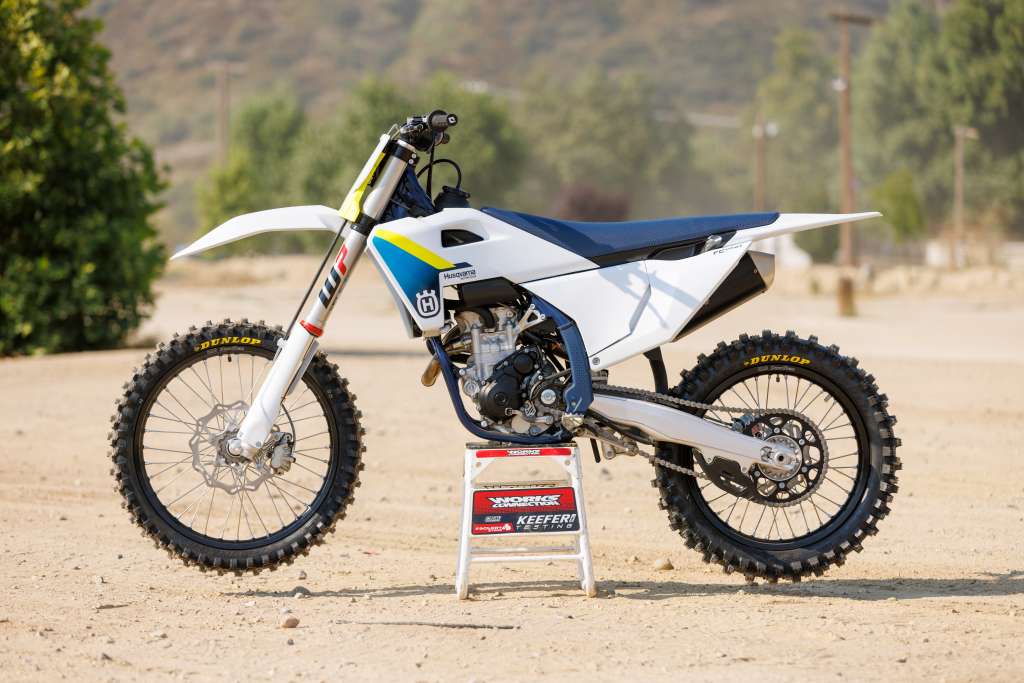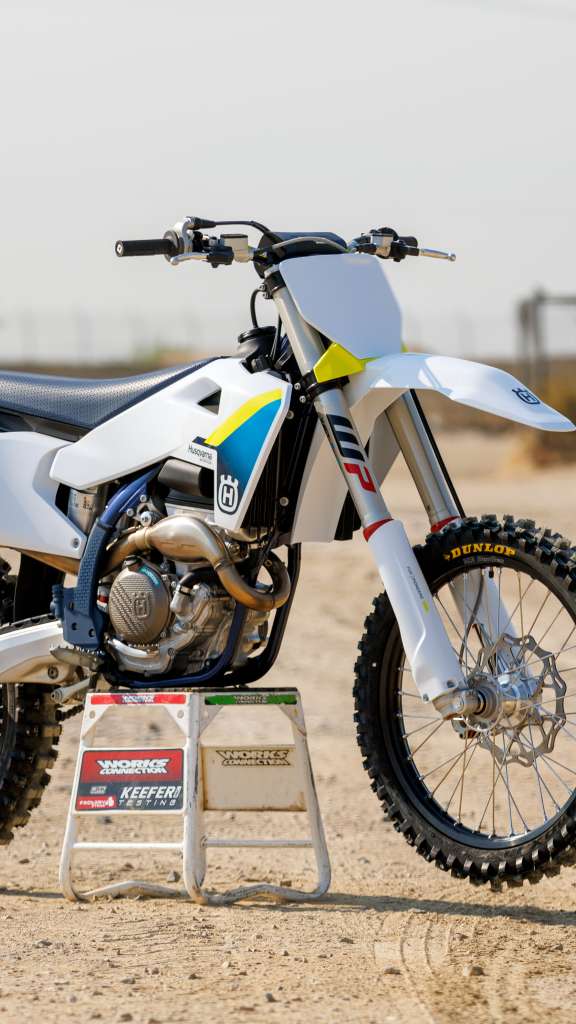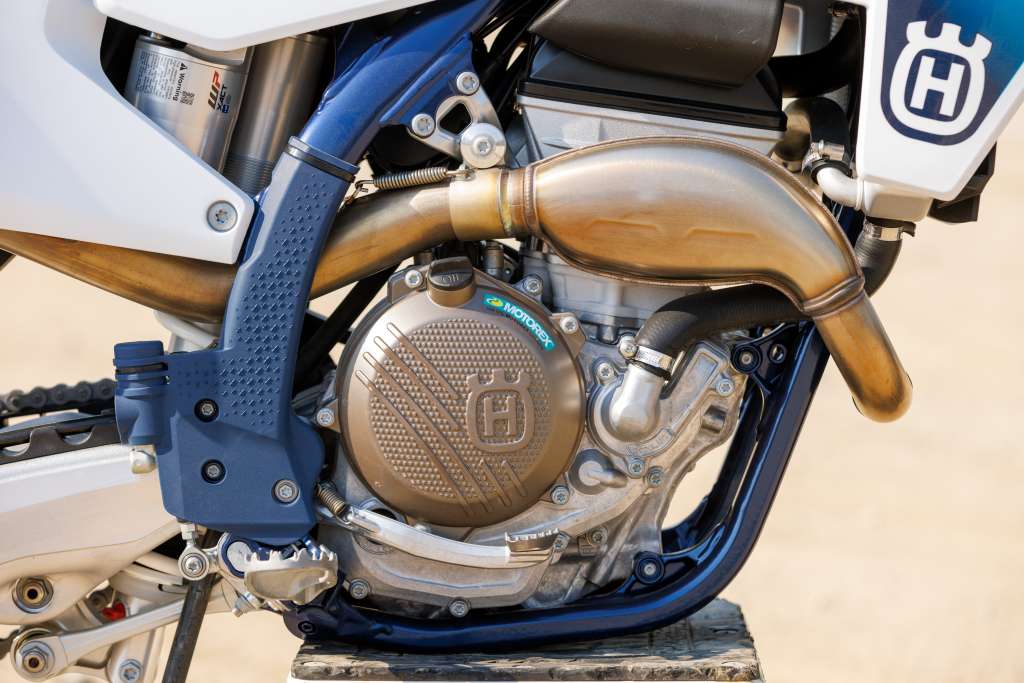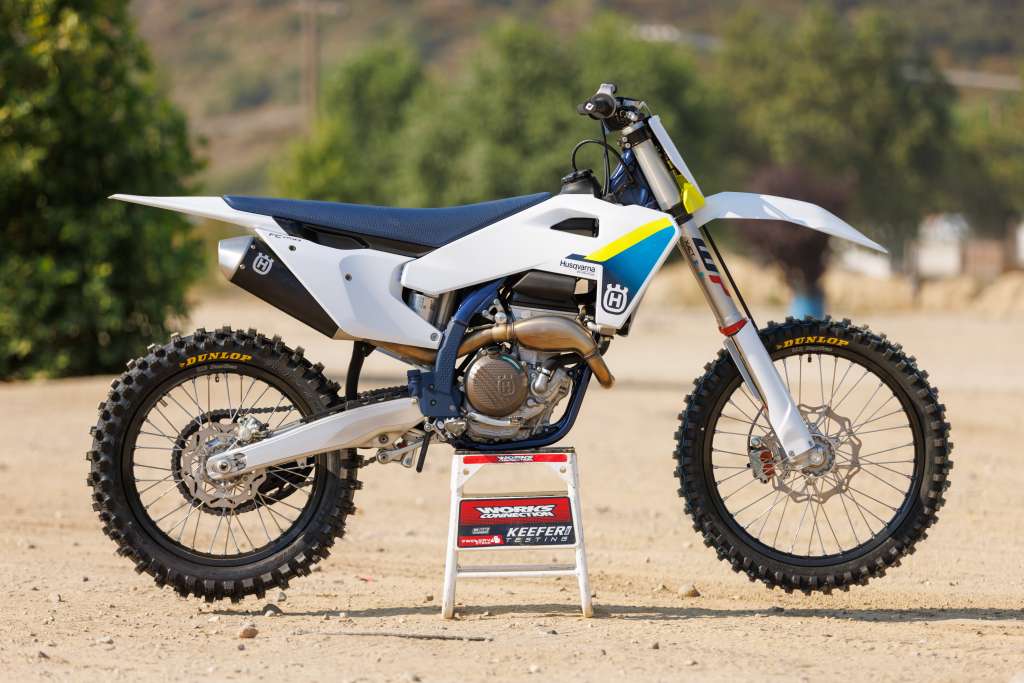Share This Article
Written By: Gardner Tarlow (62 years old, Height 5’10, 190 pounds, Senior B Rider)
To keep up with the mantra that 250F’s aren’t just for hyper active kids, there are a lot of older riders that love/need a 250F in their lives. Sometimes that 450cc power is simply too much, so we had our test rider Gardner Tarlow ride our 2025 Husqvarna FC250 for a while. Here is a real world opinion from a guy that rides twice a week and loves to ride both track and trail. -KK
There are numerous things to love about summer time but the best thing if you’re a motocross or enduro enthusiast is the early release of the following year’s new motorcycles. For me, my summer release kicked off with the new 25 Husqvarna FC250. I was stoked that Kris hooked me up with this bike early on in its release as I recently spent a significant amount of time on the 2024 FC250. I really enjoyed the 24 model and, of the three Austrian brands, this was high on my pick list for handling and being able to ride long, fun motos. I put twenty plus hours on the 2024 and by the time I returned the bike it was fully broken in and a blast to ride.

Having been an Austrian bike owner for many years, dealing with the breaking in of air forks and chassis rigidity seems to have become par for the course when owning Austrian bikes. All bike manufacturers seem to go back and forth every few years regarding chassis that feel more or less rigid than previous generation bikes. For the Austrian bikes, I have always felt like I battled more with the air forks than the chassis itself. The 23-24 generation Austrian frame struggled a bit with rigidity compared to its previous 22 generation frame but we all persevered and overcame that. For me, the 24 FC250 took 6-8 hours for the forks to break in and then the bike continued to feel better and better with each passing ride. By the time I returned the bike it felt considerably more stable, predictable and dare I say “plush” when I returned it to Kris. Yes, the fork was broken in by 6-8 hours, so why did the bike continue to feel more comfortable with more hours? At the time, I didn’t think much about the chassis and chalked most of it up to familiarity with the bike. Fast forward to 2025 and I think the answer is more evident than just familiarity.

The all-new 2025 FC250 attempts to address some of the rigidity issues that the 23-24 generation bike dealt with. The new FC250 comes with a revised chromium molybdenum steel frame and rear shock linkage, which is designed to reduce chassis rigidity for increased cornering agility and rider comfort. The updated frame has cutouts in the shock tower, smaller linkage bolts with revised linkage ratios, different tubing thickness, new cutout head stays- all to make the bike more compliant and flexible on the track. There are updated suspension settings with the WP XACT forks and shock to optimize the performance and create a better balance with the new frame. Husqvarna continues to use a high performance Brembo hydraulic clutch and brake system providing the optimal available performance in parts. The bodywork has been refined and offers specifically tailored ergonomics for easier movement on the bike. The electronics on the 25 FC250 remain the same and provide for a Map 1 and 2, traction control, quick shift and launch control.
The 25 chassis isn’t new for Husqvarna; the 2024.5 FC250 Rock Star edition bike debuted this chassis along with a host of other top of the line performance parts mid-way through the 2024 season. Unfortunately for us, with the exception of the new chassis, suspension updates and new plastic, the 25 bikes did not receive the other performance parts found on the Rock Star edition bike.
These are the primary changes to the 2025 bike and yes these are significant but is it enough to make it worth your dollar to upgrade from your previous generation bike to the 2025 version?

I received the 25 FC250 with less than a 0.6 hour on the motor and zero on the chassis. My first two track days were spent on a hard packed intermediate track. My initial impression of the motor was that it seemed very similar to the 24 version in stock form. The motor has a strong bottom end that pulls well from the crack of the throttle well into the middle range and then continues to pull through with a good top end. The Husqvarna likes to be revved high into the RPM range. The power band feels very linear and smooth and is easy to ride and easier to ride faster. This smoother power character is a result of the restricted airflow of the Husqvarna compared to the other Austrian brands. There is an alternative air box panel with perforated holes that allow the bike to breathe better and improve off the bottom performance. This is an option I would opt for.
Of the 3 Austrian brands, in stock form, Husqvarna is the most restricted when it comes to airflow. The Brembo hydraulic clutch continues to be butter smooth, bullet proof and one of the strongest clutches in the class. The electronics function very well and there is a perceivable difference between map 1 and 2. I did not feel map 2 provided my riding experience on the track with any benefit. The bike shifts very well in stock form and I didn’t think the quick shift would perform much better but I was wrong and was impressed with how well this QS system performed. I never really dialed in the use of the launch control performance over regular starts but I am sure in the right hands, it has its benefits. Traction control on the track did not help my speed or performance even during early morning muddy sessions.
Not everyone who buys a motocross bike restricts the bike use to moto only. I did manage to get off track and ride a small amount of rocky enduro trails and I thought map 2 with TC was a benefit for rocky terrain and tight single track. For those who use a single bike for both track and enduro, this feature provided a tamer bike that performed with a softer bottom end and a more tractor-like pull and performance. Map 2 and TC could also be used for a rider transitioning initially from a smaller bike until ready for the more aggressive map 1.
My initial impression of the Husqvarna chassis during the first few track days was fraught with a slight sense of typical harsh sensation I have come accustomed to with the previous generation of Austrian bikes. I assumed I was breaking in a new bike and dealing with air forks and dialing in suspension on a hard pack track.
By the third track day I had the suspension pretty close to the setting I liked and the bike felt much calmer with a decreased sense of harshness in braking bumps, acceleration bumps and slap down landings. The bike had better lean angle comfort and felt better being off camber than the 24 FC250 at the similar break in time of 4 hours and I would say even once the 24 was fully broken in.

I am now about 10.5 hours on the 25 and the bike continues to impress me, as I am every bit as comfortable as the 24 bike when fully broken in. The lean angle entering corners as well as comfort on and off camber terrain has become a more positive feeling. The bike corners well through area 2 and 3 and the rear end resists squatting in corners, which makes my consistency in corners optimal. Acceleration bumps coming out of ruts, the rear end feels more connected to the ground and less jarring to my back than the 24 bike. The entire 25 package feels very stable and predictable in a much shorter period of time. Again, without testing these bikes back-to-back they are both great bikes and both can get the job done.
I think if you’re a weekend racer, vet, or practice day hero and you’re able to save some significant money on the 2024, it is a great bike and you can throw that extra money on other modifications if desired. Maybe the 2025 engine mounts or split triple clamps? If optimal performance is your choice and Husqvarna white is your color, then the 2025 Husqvarna FC250 would be the preferred performance choice.
